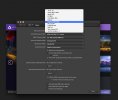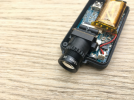Dashmellow
Well-Known Member
- Joined
- Sep 22, 2013
- Messages
- 18,670
- Reaction score
- 19,275
- Location
- Uncanny Valley (●_●)
- Country
- United States
- Dash Cam
- Umpteen
On WB I think you misinterpreted what I said. I said above that dynamic to me means constantly adjusted and I said no camera achieves that. What a camera does is match the current lighting conditions to the nearest pre-set balance and then applies that pre-set, whether it's right or wrong. I explained that SLR's are more accurate because they have a greater selection of pre-set scenarios but they still get it wrong. Please feel free to re-read my post above, it's unedited since you posted.
As for the article, I can't comment on the overall accuracy as I have to admit I didn't read it, and still haven't! I just saw the lines about presets when I scanned it and quoted it.
I assure you I know about white balance. I own, adjust and use high power RGB laser systems. Although you're coming at it from a completely different angle, you still need to understand colour balance.
What exactly is the point of publishing links to articles you've found on the internet alleging to support your remarks when you haven't even bothered to read the material you are posting??!!! What kind of BS is that??!! It simply makes you sound foolish. Many of your attempts to show us all how much you know often end up displaying all that you don't know. For example, just the other day you posted Photoshop color adjustments in regard to color correcting the green bias on the new Mobius Maxi, except that digital cameras don't work like that, as the photometric or colormetric functions in Photoshop you used or talked about are not available to digital cameras.





